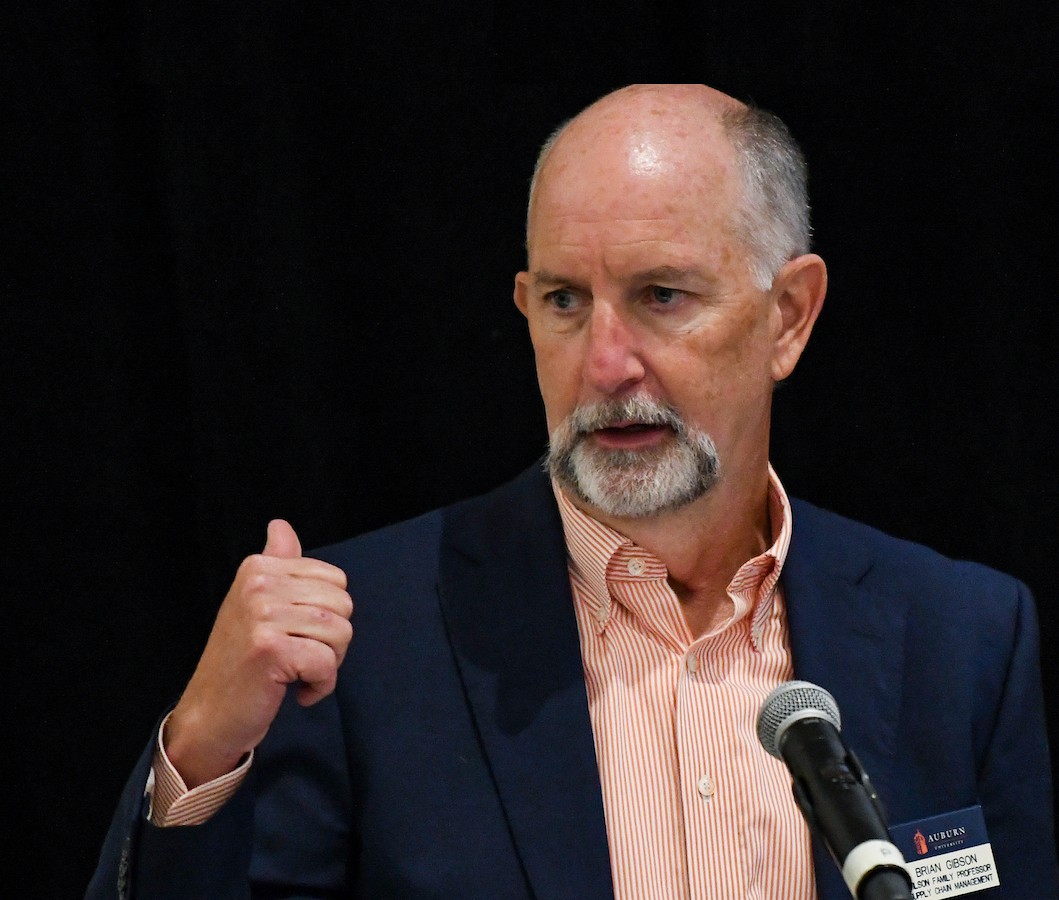 |
Just-in-time manufacturing and lean inventory management practices have resulted in
extended backlogs of chips needed to build a wide range of consumer products from
cell phones to automobiles.
|
The impact of the COVID-19 pandemic disruption on supply chains continues to extend
well-beyond short-term disruptions and urgent struggles on behalf of US manufacturers
to obtain the critical raw materials and essential components they need to keep their
operations humming and finished products delivered to their customers. As companies
emerge from the past eighteen months of interrupted shipments and limited transparency
regarding what they can expect to receive from their suppliers and when, some reports
are that supply chain professionals are shifting their product procurement and sourcing
strategies to incorporate a more risk-conscience posture. Are others moving back to
old bad habits?
It appears to the casual observer that low-cost approaches can no longer be the driving
force in manufacturing and supply chain strategic thinking. The question is, are critical
supply chain management decisions now being made based on a more comprehensive, risk-averse
basis?
 |
Glenn Richey, Harbert Eminent Scholar and Department of Supply Chain Management Chair.
|
The Harbert College of Business sat down with Glenn Richey, Harbert Eminent Scholar and Chair of the college’s Department of Supply Chain Management,
to discuss how supply chain managers are handling this evolving landscape.
HCOB: Perhaps the best place to start to understand the rapidly changing global manufacturing
and supply chain dynamic is for you to describe for us the way things were before
the pandemic hit.
Richey: That’s a big ask! For the past 30+ years, the mantra was just-in-time and lean
manufacturing. The supply chain was considered a cost center—a necessary evil. Supply
Chain Managers focused heavily on operational efficiency as directed by CEOs and CFOs.
Purchasing managers focused on discovering and securing the lowest cost supplier possible,
regardless of the source. Limited attention was paid to considering the geographic
location, ethical practices or political environment of the companies from which critical
components were sourced. Globalization ruled the day, and US companies defaulted to
sourcing heavily from the manufacturing center of the planet—China. Low-cost suppliers
flourished well beyond our shores. Goods and services flowed more freely across oceans
and international borders, and sole-source agreements based on cost containment prevailed.
HCOB: How did that change with the pandemic and now that we’re slowly coming out of it?
Richey: The economic impact of COVID-19 revealed flaws in global manufacturing and supply
chain thinking that were already ripe for change. When factories were operating at
full capacity across the globe and supply chains flowed freely, all was well. Manufacturers
leveraged their low-cost, often sole-sourced supply agreements, driving down the cost
of goods and services delivered to an expanding customer base. Just-in-time and lean
manufacturing meant companies no longer had to keep safety stock from key supplies
or even finished goods on hand. This was a precarious position, really, masked by
the seamless operation of a global supply chain based primarily on a lowest-cost mindset
driven from the C-suite.
That all fell apart when factories across the globe were forced to close, depriving
companies of a steady supply of necessary raw materials and key components. Shortages
of a certain type of integrated circuit manufactured in Asia, for example, forced
Ford and other auto manufacturers to shut down entire assembly lines. In some cases,
a sole-sourced $5.00 chip stood in the way of $50,000 trucks being sold to ready buyers.
It was very short-sighted, to say the least.
 |
Anthony Roath, Associate Professor
|
Dr. Anthony Roath, Associate Professor here at Harbert, and I have been working the past 15 years to
publish supply chain research supporting a paradigm shift from operational efficiency
to strategic responsiveness. Convincing academics and business to adopt this new approach
to strategy has been difficult because it is counter to the entrenched cost-focused
norm. Luckily, our foundational study was accepted last week by the Journal of Business Logistics, the field’s top logistics journal. Hopefully, our argument will draw managerial
attention to the importance of markets, the environment, stakeholders and specifically
the customer when it comes to building strategy. An internal focus on cost is foolish
in a world where disruption is obvious to everyone.
HCOB: Help us understand how two of the factors you mention—low-cost, sometimes sole-sourced
supply agreements and just-in-time manufacturing worked together to cause the change
in strategic thinking we are seeing.
Richey: The fatal flaw in both lowest-cost sourcing and just-in-time and lean manufacturing
is the absence of risk management and contingency planning. In an effort to drive
down costs and improve efficiency, risk took a back seat. When it comes to sole sourcing,
the inherent risk of putting all your eggs, or most of them, at least, into one basket
has been exposed. During the Trump tariffs roll out, companies complained that they
were being singled out for sourcing solely from one manufacturer in China. One company
even complained that futons could only be built in China. So heavily exposed to risk
and averse to making changes, they just complained. Other companies diversified their
supply base, only to move back to sole sourcing when the tariff issue subsided.
 |
Richey discusses the return to adequately considering risk in developing and implementing
supply chain strategies in a post-COVID-19 world.
|
The planning horizon for these companies is far too short. The decision to source
a given raw material or component from a single supplier in China may look good from
an efficiency standpoint, but what if that supplier is unable to deliver on time,
or at all? The cost of finding a new source, in production downtime alone, will be
crippling.
What we’re seeing now, or I hope we are, is a move toward multiple sourcing arrangements
where there’s a primary supplier and one or two secondary suppliers. Companies in
these cases will often award Supplier A with 75% of the order, Supplier B gets 15%
and Supplier C gets 10%. That not only lessens the risk involved if the primary supplier
is unable to perform—you have other suppliers already in the procurement system and
prepared to step in—it also fosters healthy competition where Suppliers B and C are
always trying to get a bigger share of the pie. This approach to sourcing isn’t new.
It was the norm in the 1990’s when I was running a major wholesale distribution facility.
Industries, most of them anyway, just got overly focused on cost to keep prices low.
When it comes to just-in-time manufacturing, again, risk management is emerging to
question the value of keeping slim inventories as well as fostering a return to forward
buying—stocking up on certain materials through massive bulk orders for an entire
quarter and even for a year in advance in some cases. That too, however, comes with
its own risk. Consumer preferences and buying patterns change quickly, running the
risk that those inventories might become obsolete or damaged. One example of the magnitude
of this shift is Toyota, which pioneered the concept of just-in-time manufacturing.
The pandemic prompted Toyota to scale back this overarching business mandate to accommodate
risks made abundantly clear by the pandemic. Please realize that Toyota has an amazing
network of partners. Many of those partners include joint ownership, family ties,
and decades long agreements. If Toyota says just-in-time, lean manufacturing, and
sole sourcing isn’t working, I believe them!
HCOB: What other changes are being made to accommodate risk in procurement and supply chain
practices as a result of the pandemic?
Richey: Another risk factor being revisited is geography—where suppliers are located. Again,
the chip business provides a good example. When chips sourced from China became scarce
due to factory shutdowns as well as political issues such as tariffs, some companies
turned to suppliers in other Asian countries—Vietnam, Laos, the Philippines for example.
Trying to incorporate the concept of relative risk (i.e., risk versus other options),
supply agreements shifted to companies operating outside of these countries. They
calculated how much control they needed regarding their supply chains, the trade-offs
in cost, availability, etc.
Problem was, as soon as they moved to securing chips from manufacturers in these countries,
it soon became evident that many of the raw materials required to make the chips they
needed came from China. So, they had not really altered their source of supply. The
supply chain map still included the risky location. They had simply moved a piece
of it, but the supply chain was still running through the area that was generating
the risk they were seeking to avoid. This is a mistake that I bet many companies haven’t
tracked down.
And I seem to be picking on China. Sole sourcing can be a problem anywhere in the
world. Getting product out of Australia or into California is also a massive bottleneck.
We must work to be more responsive. And we can obviously do it—look at the vaccine
distribution!
HCOB: What you’re describing here seems like a fundamental change in thinking at virtually
every stage of supply chain management—how are companies managing this paradigm shift?
Richey: One way they are addressing this is through training, and that’s where my real
interest in all this lies. How can companies retrain their supply chain managers to
incorporate a more risk-responsiveness mindset into their procurement and supply chain
decision-making? We’re doing a lot along those lines here at Harbert in terms of educating
our supply chain management students to address the new reality. We have launched
a Master’s degree that enrolled fifteen students in the first class. We’re also working
with some of our business partners to help them transition the decision-making processes
of their employees. We know industry must change. We are doing our best to lead rather
than follow.
Next: How Harbert’s Supply Chain Management Department is preparing students and
business partners like Accenture to evolve in the changing world of global supply
chain management.

 Degrees & Programs
Degrees & Programs
 Faculty & Staff
Faculty & Staff
 Career Development
Career Development
 Recruiters & Industry
Recruiters & Industry






